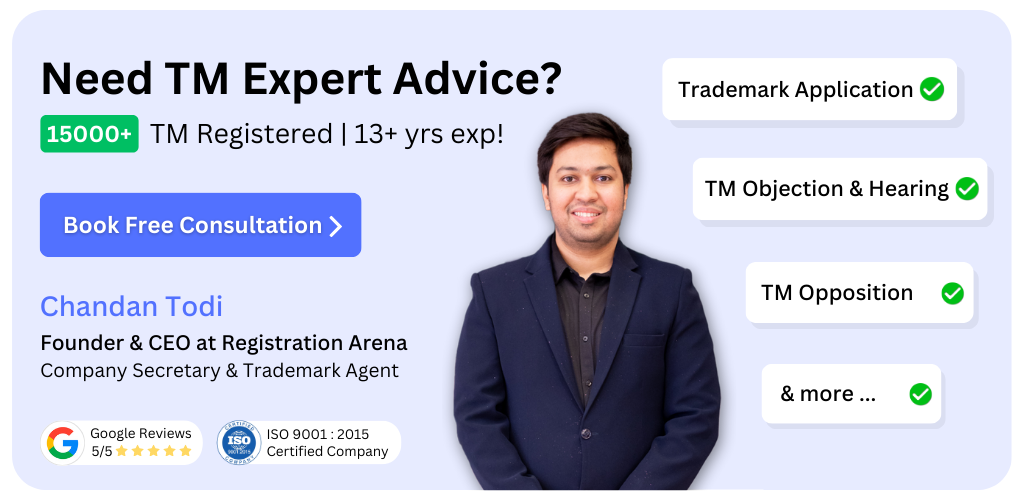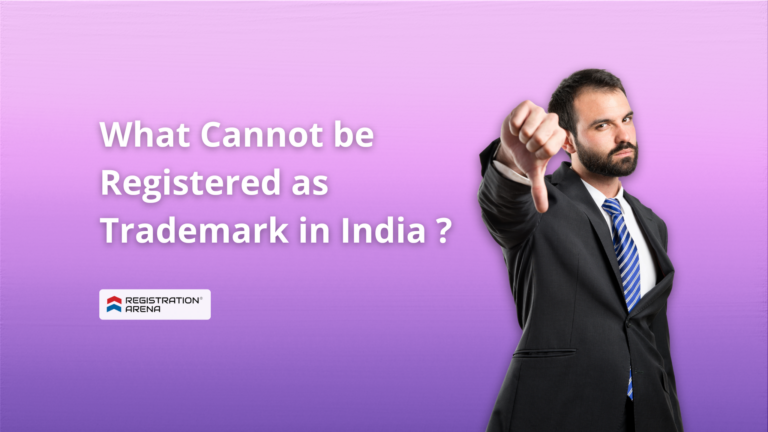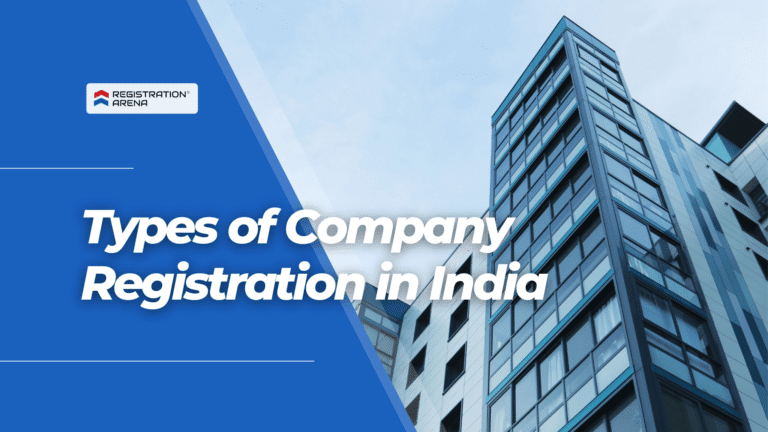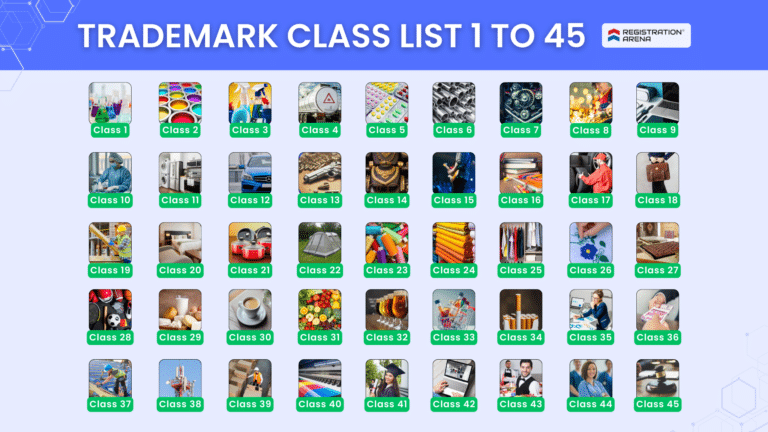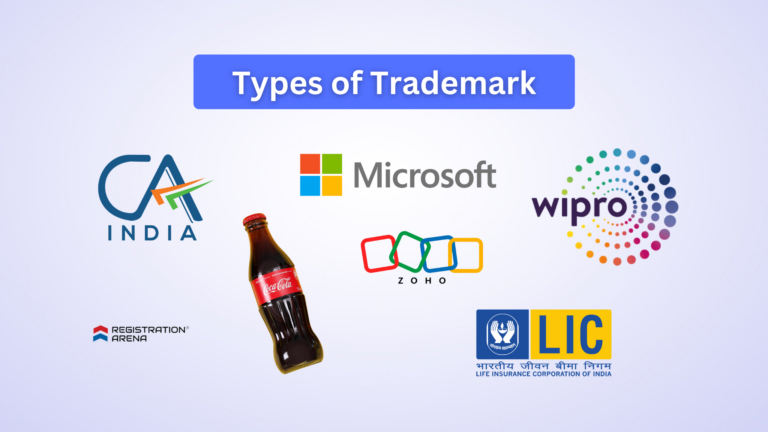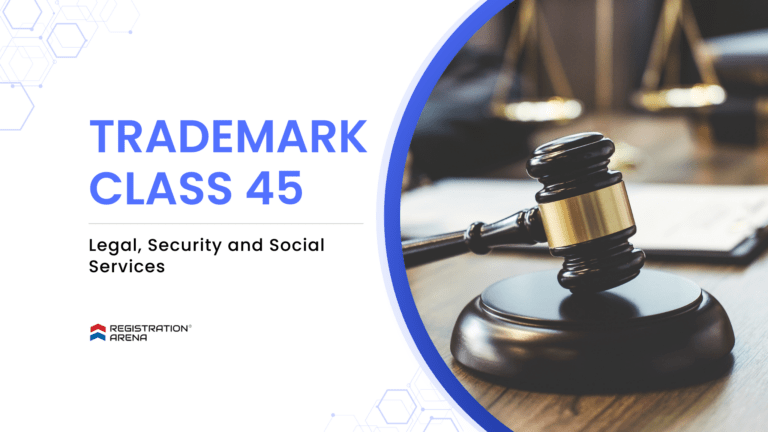Introduction
A Trademark is a recognizable word, sign, phrase or a symbol that denotes a specific product and legally differentiates that product from the rest of the similar products in the market. It helps the customers exclusively identify a product as belonging to a particular entity and recognize the entity’s ownership of the brand.
The process through which a trademark is recorded in the register of Trademarks is referred to as registration. Trademark Registration protects its owner by granting them the exclusive right to use the mark or allow others to use it in exchange for compensation. Trademark registration also prevents unfair competitors, like counterfeiters, from using similar distinctive signs to sell inferior or different products and services. This system allows skilled individuals and businesses to produce and market their goods and services under fair conditions, ultimately promoting international trade. However, there are instances when a trademark faces objections from the examiner during the registration process. In such a case, it becomes necessary to understand how to respond to such objections effectively.
In this blog, we shall discuss the common reasons for trademark objections, documents required for trademark objection reply, Process of filing Trademark Objection Reply, Consequences of Filing Trademark Objection Reply, Sample of Trademark Examination Report received from Registrar.
Meaning of Trademark Objection
In India, a trademark objection refers to a formal objection or initial refusal made by the Trademarks Registrar in response to a trademark application filed by an individual or business. When you file a trademark application with the Trademarks Registrar, it undergoes a thorough examination process to ensure that it meets the necessary legal requirements for trademark registration. If the registrar finds any issues or discrepancies with your application, they will raise objections.
Examination Report
During the examination process, the Trade Marks Office evaluates whether a trademark is eligible for registration based on the absolute and relative grounds for refusal outlined in the Trade Marks Act, 1999. Following this evaluation, if the registrar finds any issues or discrepancies with your application, they will raise objections and issue an examination report. The applicant is required to address any objections raised in this report within one month of its issuance. Based on the applicant’s response, the Registrar of Trade Marks decides whether to refuse the application, accept it for advertisement, accept it with certain conditions, or schedule a “show cause” hearing. At the hearing, the application may be accepted, rejected, or accepted with limitations. If the application is ultimately rejected, the applicant has the option to appeal the Registrar’s decision to the Intellectual Property Appellate Board.
Common reasons for trademark objections
Sections 9 and 11 of the Trade Marks Act, 1999 provides the absolute and relative grounds on which the trademark examiner can raise objections. Generally, the following are the common reasons why trademark objection(s) is/are raised include:
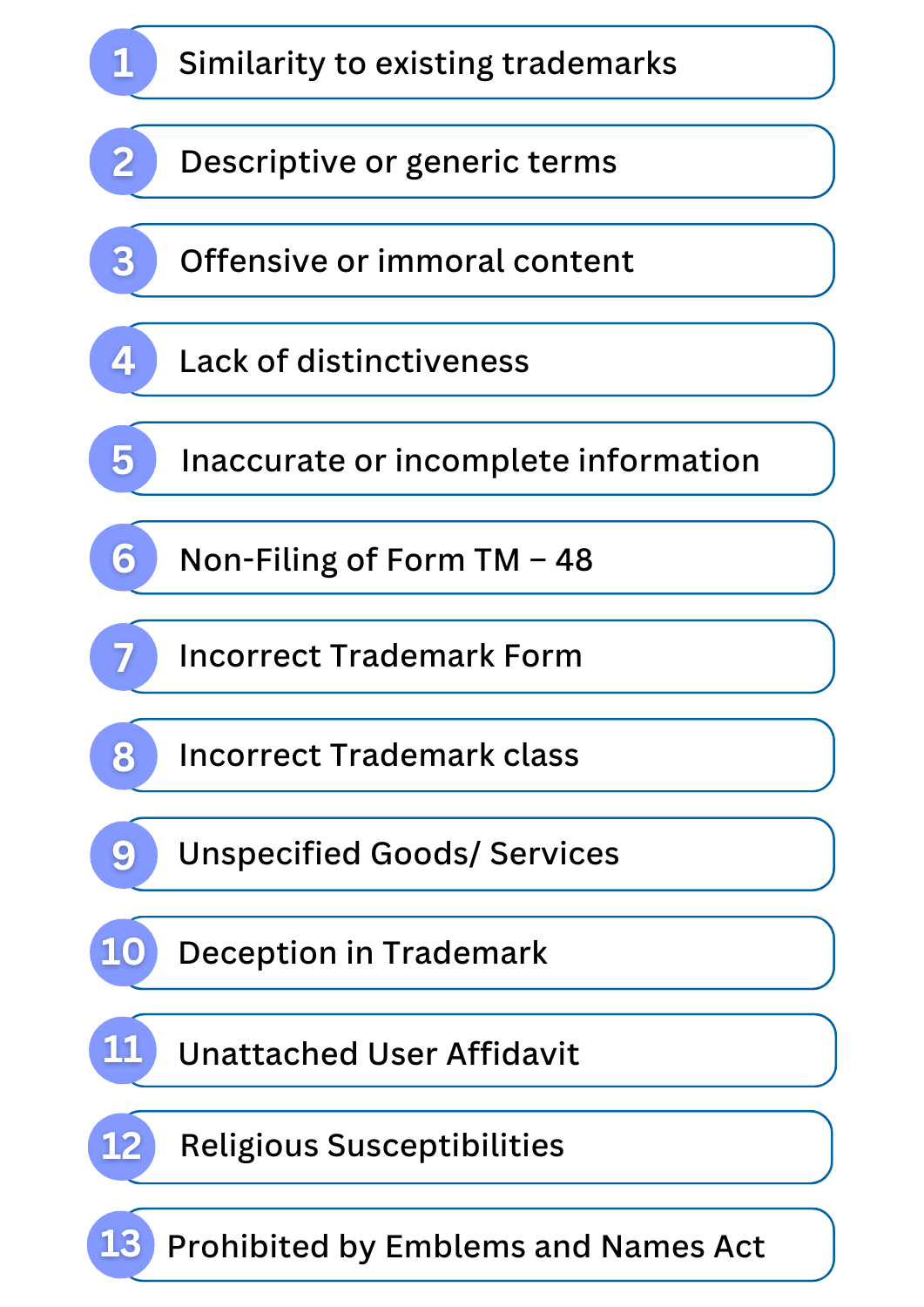
1. Similarity to existing trademarks
If your proposed trademark closely resembles an existing registered trademark, the registrar may object to it to prevent confusion among consumers.
2. Descriptive or generic terms
Trademarks that are descriptive or generic in nature and do not distinguish the goods or services may be objected to. It’s essential for a trademark to be distinctive.
3. Offensive or immoral content
Trademarks containing offensive or immoral content can be rejected.
4. Lack of distinctiveness
A trademark must be unique and capable of distinguishing the goods or services it represents. If the registry believes your trademark lacks distinctiveness, they may raise an objection.
5. Inaccurate or incomplete information
Errors or omissions in the application form, such as incorrect information or missing documents, can lead to objections.
6. Non-Filing of Form TM – 48
The TM-48 form is used when a trademark application is submitted by a trademark agent or attorney on behalf of the applicant. If this form is missing or filled out incorrectly, the examiner may object.
7. Incorrect Trademark Form
When a trademark application is not submitted using the correct form, the trademark examiner can object to it. The Trade Marks Act, of 1999 specifies that for goods or services falling into any class, the application should be made using Form TM-A.
8. Incorrect Trademark class
Proper classification is crucial for filing a valid trademark application. Selecting the wrong trademark class empowers the trademark examiner to object to the application.
9. Unspecified Goods/ Services
The application should include a clear description of the goods and services for which the trademark is sought. If it lacks specific information, the examiner may object. However, applicants should avoid including an extensive list of goods or services.
10. Deception in Trademark
It essentially means that a mark will not be eligible for trademark registration if it has characteristics that can deceive the public or cause confusion.
11. Unattached User Affidavit
The user affidavit confirms whether the applied trademark has been in use before the filing date of the trademark application or not. To support this claim, the applicant should include evidence of prior trademark usage with the application. If the examiner doesn’t find this evidence attached, they have the authority to mark the trademark as “objected.”
12. Religious Susceptibilities
Registration is refused if the mark contains or comprises any matter likely to hurt the religious susceptibilities of any class or section of the citizens of India.
13. Prohibited by Emblems and Names Act
If the use of a mark is prohibited under the Emblems and Names (Prevention of Improper Use) Act, 1950, it cannot be registered as a trademark.
What if Objection is raised by the Registrar?
When the registrar raises an objection, they will provide a written examination report specifying the reasons for objection. The applicant then has the opportunity to respond to these objections within a stipulated period, usually within 1-2 months, by providing arguments and evidence to overcome the objections. If the applicant’s response is satisfactory and addresses the concerns raised by the registrar, the trademark may proceed to registration. If the objections are not addressed adequately, the application may be refused.
What if no Objection is raised by the Registrar?
Conversely, if no opposition is raised within the three-month period following the publication of your trademark in the Journal, the Registrar will approve your trademark, and the status will be updated to “Registered.” This signifies that your trademark has successfully completed the registration process and is now legally protected in India.
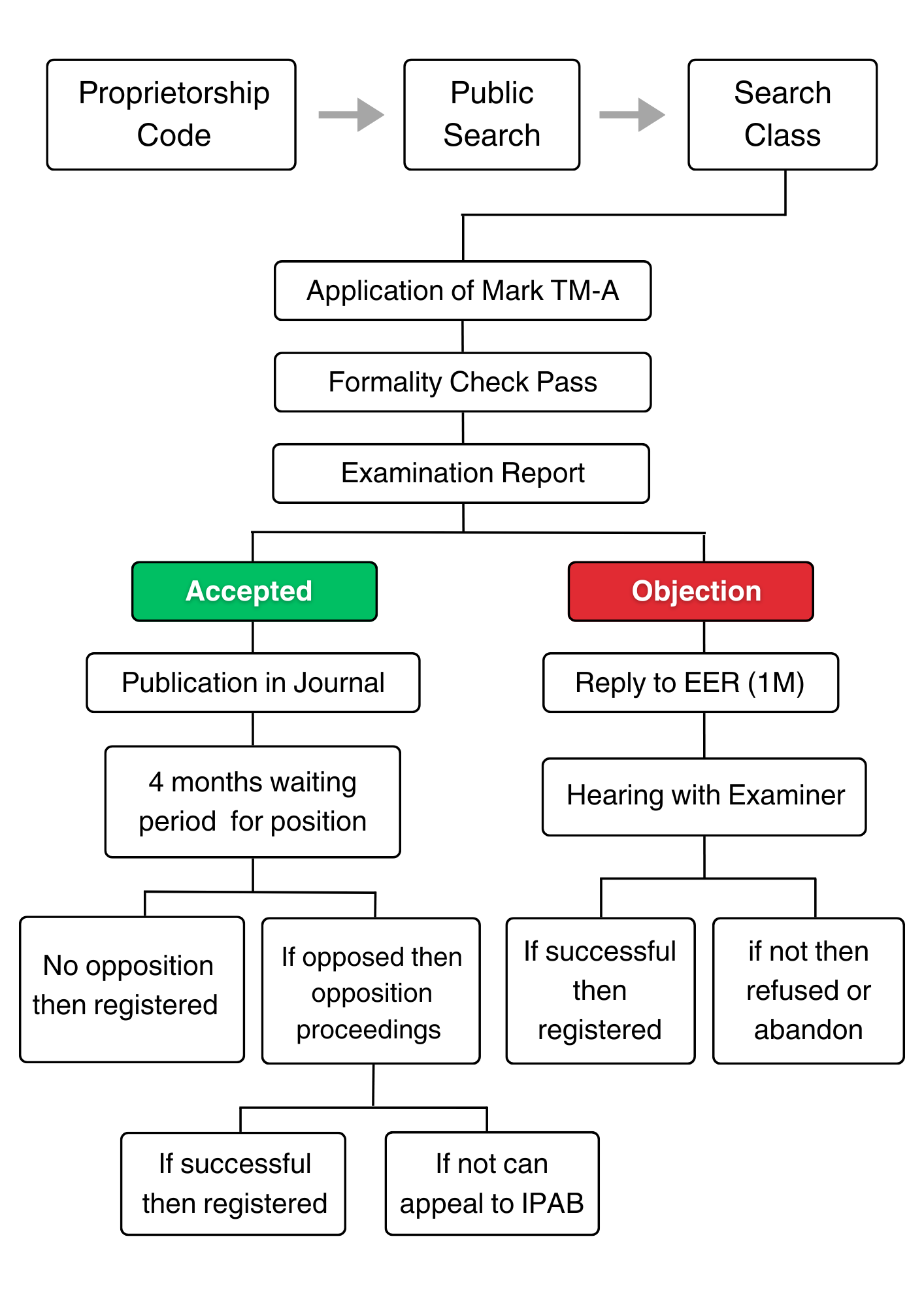
Documents required for Trademark Objection Reply
When preparing your response to a trademark objection, it’s crucial to have the appropriate documentation in order. The necessary documents for effectively addressing a trademark objection typically include:
1. Brand Logo
A clear representation of your brand logo, which is an integral part of your trademark. This should be submitted to demonstrate the visual identity associated with your trademark.
2. Examination Report:
This is the official document issued by the Trademarks Registrar, detailing the objections raised against your trademark application. It’s vital to understand and address the specific points outlined in this report.
3. Supporting Proof of Logo Ownership:
Providing evidence that substantiates your ownership of the brand logo is essential. This may include design files, usage history, or any relevant records that establish your claim to the logo.
4. Proof of Your Identity:
To verify your identity as the applicant or representative, you should furnish valid identification documents, such as your passport, driver’s license, or any other government-issued ID.
5. Address Proof:
Submitting official address proof, like a utility bill or a legal document with your current address, is necessary to confirm your contact details and correspondence address.
Gathering and presenting these documents accurately and comprehensively is a critical step in addressing trademark objections effectively and increasing the chances of a successful resolution.
Process of Filing Trademark Objection Reply:
If a trademark applicant receives the examination report with objections raised by the examiner, he should file a reply following the below process:
1. Study and Analysis of Objections
Upon receipt of the objection, the applicant should first thoroughly study and analyze the objections to eliminate any potential ambiguity. A comprehensive review of both the applied trademark and the examination report should be done to gain a clear understanding of the objections raised by the examiner.
2. Drafting of Trademark Objection Reply
Once the proper analysis of the objections is done, the next step is to prepare a draft reply. It should include the reasons, relevant case laws, and evidence as to why such objections shall be waived off and the trademark be registered in the favour of the applicant. Additionally, supporting documents as mentioned above should be attached.
3. Filing of Trademark Objection Reply
The applicant or agent if appointed is required to respond to the examiner’s objection(s) within a period of one month from the date of receipt of the Examination Report. Failure to respond to the examination report or failure to file a trademark objection reply within this specified period can lead to the abandonment of the application. Filing of Trademark Objection Reply can be complex and time-consuming! Take the help of our experts and file it easily. Get in touch with us now!
Consequences of Filing Trademark Objection Reply
Once a trademark objection reply is submitted, it is considered by the appropriate authorities. Then, any of the two possible outcomes will follow –
Trademark authorities are satisfied with the reply
If the trademark authorities are satisfied with the reply of the applicant, they accept the application and proceed towards the publication of the trademark in the Trademark journal. A trademark is published in the journal for 4 months. During this period, third parties can oppose the registration of a trademark. If oppositions are not received, the trademark becomes eligible for registration and a registration certificate is automatically generated. The registration of a trademark is valid for 10 years. It can be renewed every 10 years, perpetually. For renewal, you have to file FORM TM-R within one year before the expiry of the last registration of the trademark.
Trademark authorities are not satisfied with the reply
If the trademark authorities are not satisfied with the reply to the objections raised, an opportunity of hearing is provided to the applicant for further submissions/ clarifications. A notice of show-cause hearing is issued and the trademark hearing is conducted as per the schedule. Now there can be three consequences –
- Publication of Trademark in Journal – If the hearing results in a positive outcome, the authorities will process the trademark for publication in the trademark journal, and the above-mentioned process will be followed.
- Adjournment of Hearing – The trademark authorities may adjourn the hearing to a later date.
- Rejection of the Application – The trademark authorities reject the application and now the applicant has to file a fresh application for trademark registration.
Sample of Examination Report received from Registrar
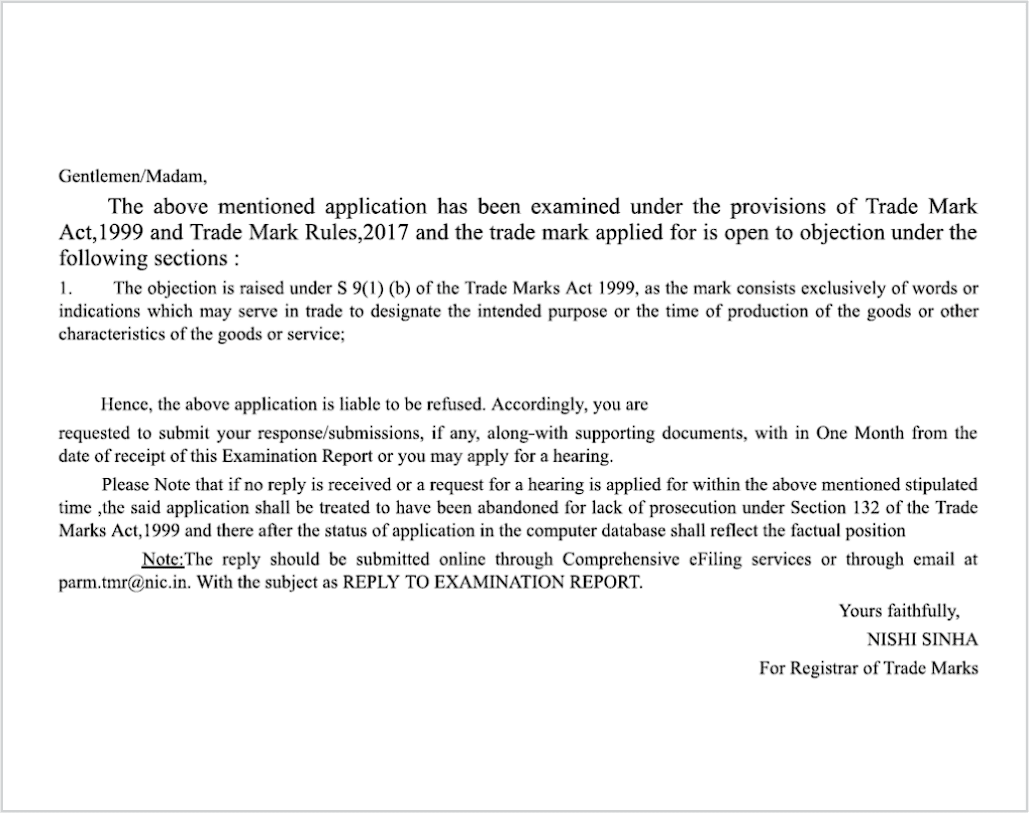
Conclusion
Trademark registration is the process of officially recording a trademark with a Trade Mark Registrar Office to protect it from unauthorized use. Trademark Objection is one the process of the Trademark Registration in which responding to a trademark objection is a crucial phase in securing the identity of your brand. Thoroughly understanding the objections, submitting a proper and timely response, and providing necessary documentation are key to a successful outcome. It is advisable to consult a trademark agent or attorney who can assist with the drafting of proper reply to examination report and attending show cause hearing, if any with the Registrar.
Are you looking for trademark registration? At Registration Arena, our expert team is here to guide you through the process. Contact us today to start the Trademark Registration process in India smoothly and efficiently.

